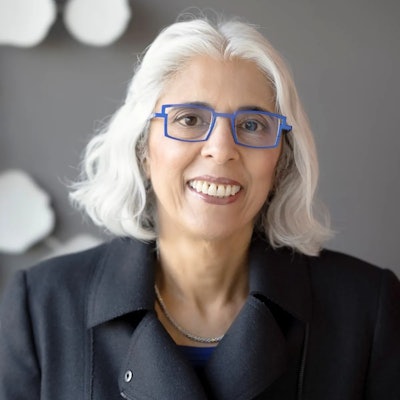The power of collaboration and the importance of building paths for others to follow were topics, front and center, during the 2024 White House Summit on STEMM Equity and Excellence. Dr. Arati PrabhakarNational Association of Counties
Dr. Arati PrabhakarNational Association of Counties
During the May 1 event – hosted and livestreamed by the STEMM Opportunity Alliance (SOA) and the White House Office of Science and Technology Policy (OSTP) – leaders and pioneers across multiple industries gathered to speak about the ways in which they and their organizations are advancing the work of increasing diversity, equity, and access in the fields of science, technology, engineering, mathematics, and medicine (STEMM).
Founded by the American Association for the Advancement of Science (AAAS) and the Doris Duke Foundation, the SOA is a coalition of more than 200 organizations that have committed to aiding efforts to bolster equity in STEMM fields. The alliance launched in 2022 at the first White House Summit on STEMM Equity and Excellence.
These organizations are collectively investing more than $2 billion toward efforts to improve equity in STEMM, said Dr. Travis York, director of Inclusive STEMM Ecosystems for Equity & Diversity (ISEED) at AAAS. He also announced the appointment of Dr. Stephanie Rodriguez from the Department of Labor as SOA’s inaugural director.
The “sobering reality” is that there is inequity in STEMM education and pay in this nation, said OSTP Director Dr. Arati Prabhakar, noting that, on average, Black workers in STEM are paid 78% and Hispanic workers in STEM are paid 83% of what their white counterparts make.
During the COVID-19 pandemic, Black, Hispanic, and Indigenous students had less contact with teachers and less access to computers with stable internet connections compared to white students, Prabhakar said.
“For many decades, we've seen very well-intentioned STEM efforts focused on equity and opportunity,” Prabhakar said. “But we haven't seen the change in outcomes at the scale that is necessary to really get this job done.
“And we just can't let more time go by.”
The summit kicked off with the official release of "STEMM Equity and Excellence 2050: A National Strategy for Progress and Prosperity," a roadmap that aims for the country to reach parity in its STEMM workforce by 2050 through helping 20 million people from historically excluded and marginalized communities better enter and succeed in those fields.
According to the roadmap document, the national plan is built on a foundation of accountability and partnership, a capstone of effective communications and representations about diversity in STEMM, and five key pillars: engagement, inspiration, discovery, innovation, and opportunity. Each of the pillars has to do with a pivotal part of diversifying STEMM, from motivating people into these fields to making sure people can enter and be supported in them.
The rollout of this decades-long plan comes with 10 initial parties to serve as “anchor partners” to help coordinate action and track the progress of efforts, York said. These 10 include the likes of American Institutes for Research (AIR), Jobs for the Future (JFF), Morgan State University, and Spelman College.
As an anchor partner, Spelman’s work will focus on the pillar of innovation, which partly has to do with making sure that researchers from marginalized communities get equitable funding and support. The school has been part of the SOA since the beginning, Spelman President Dr. Helene Gayle told Diverse.
“We very much value this national effort to really look at equity in STEMM and STEMM education,” Gayle said. “We're helping to really lead on developing future leaders in the field, create a more diverse and equitable scientific workforce and enterprise.”
Several organizations made or announced commitments that aligned with the national strategy. Panelist Shane Woods, executive director of Girlstart, which helps educate grade school-age girls about STEM topics, announced the women-led organization’s new goal of trying to reach 12,000 girls over the next three years through afterschool, summer, and other conferences.
Corporations like Uber and 3M will also take part. The ride-share company will be working together with the Tech Accountability Coalition to promote accountability by creating a standardized framework with which corporations can measure and compare their diversity, equity, and inclusion efforts.
“In my experience, in more than 25 years in this space, the one thing that drives action more than any other is actionable insight,” said panelist Oona King, chief diversity and inclusion officer for Uber. “Let's agree on what we're measuring. Let's sign up to greater data transparency. When you track and measure things, that is when progress happens."
And 3M is dedicating millions in its efforts, including 5 million STEMM and skilled trades educational experiences for marginalized and underrepresented people by 2025 and $16 million for STEMM and workforce development initiatives, according to the SOA.
Regardless of the resources put toward this work, organizations must not forget to incorporate local leadership and connections, noted panelist Dr. James Martin, vice chancellor for STEM research and innovation at the University of Pittsburgh.
Some of the key metrics listed in the roadmap are related to better funding institutions that serve minority populations. According to the strategy, the U.S. must look to invest $15 billion in research infrastructure and capacity building at HBCUs, tribal colleges and universities (TCUs), and other minority-serving institutions (MSIs) by 2040 as well as double research funding to such schools by 2045.
In the pursuit of lifting up the next generation of STEM leaders, being role models and instilling confidence in young women is crucial, said speaker Heidi Lagares-Greenblatt, software R&D manager for the data science group at HP Inc.
“My experience pursuing a career in STEM has made me only more dedicated to ensure that there is a better path available for my children and children like mine,” Lagares-Greenblatt said. “People think it is an honor to be the only one in the room, to be the sole person who may identify yourself as a girl in a class or in a room like this. To be honest, it is not as great as you think. You feel alone throughout the journey.
“It shouldn't be that way. I want to be one of many who achieve excellence. I don't want to be the statement of the first woman or the only woman.”




















